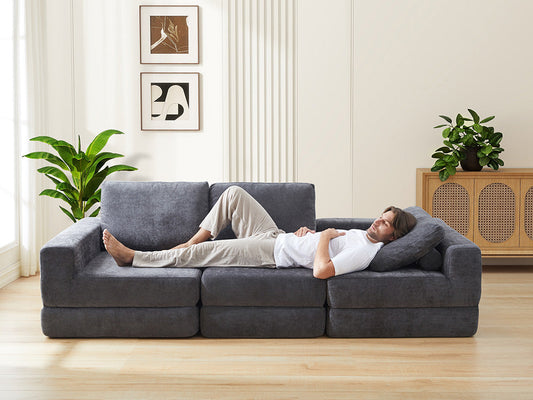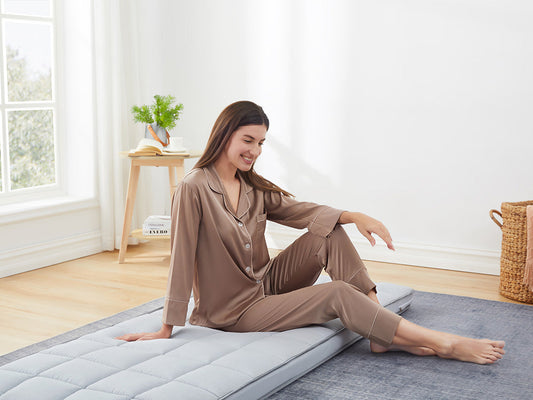In modern home furnishing and industrial design, high-resilience foam, memory foam, and composite materials combining the two have become popular due to their unique properties. This article analyzes the characteristics, pros and cons, and application scenarios of these three materials to help you make informed choices.
1. High-Resilience Foam: Synonymous with Support and Durability
High-resilience foam, made from polyurethane, features an open-cell structure that ensures rapid rebound and strong support. Its internal pores enhance breathability while providing exceptional resistance to deformation, allowing quick recovery even under prolonged pressure.
Advantages: High support, breathability, and durability.
Disadvantages: Relatively firm texture, less surface comfort.
Applications: Ideal for scenarios requiring quick rebound and load-bearing, such as sofa cushions, car seats, and gym equipment padding. For example, racing car seats use high-resilience foam to stabilize drivers during bumps.
2. Memory Foam: The Gentle Guardian of Pressure Distribution
Memory foam adapts to body contours through temperature-sensitive viscoelasticity, achieving a "slow-rebound" effect. It softens upon contact with body heat, evenly distributing pressure—ideal for prolonged support.
Advantages: Zero-pressure comfort, noise reduction, and spinal protection.
Disadvantages: Limited breathability, heat retention in high temperatures, and potential sagging under long-term localized pressure.
Applications: Widely used in mattresses, pillows, and medical supports. For instance, post-surgery recovery mattresses reduce bedsores, while gaming chair backs leverage its contouring for enhanced comfort.
3. High-Resilience + Memory Foam Composite: The Golden Balance of Performance
By layering and bonding techniques, the composite material combines the support of high-resilience foam with the contouring of memory foam: the top memory foam layer disperses pressure, the bottom high-resilience layer provides foundational support, and a middle transitional layer enhances structural stability.
Advantages: Synergistic mechanical performance (1+1>2), extended lifespan, and improved breathability.
Disadvantages: 40% higher cost and complex manufacturing processes.
Applications: Premium mattresses (e.g., zoned sleep systems), airline seats, and gaming cockpits. A branded smart mattress uses this composite structure to offer zoned support for shoulders during side sleeping and lumbar support for back sleeping.
4. Selection Recommendations
Prioritize cost-effectiveness and durability: Choose high-resilience foam (e.g., office chairs).
Seek ultimate comfort: Opt for memory foam (e.g., cervical pillows).
High-end customization: Composite materials are the top choice (e.g., luxury car seats).
With advancing technologies like 3D printing, composite materials are enabling precise zoned designs, poised to revolutionize smart home and medical rehabilitation fields. Understanding material properties is key to maximizing their value.








